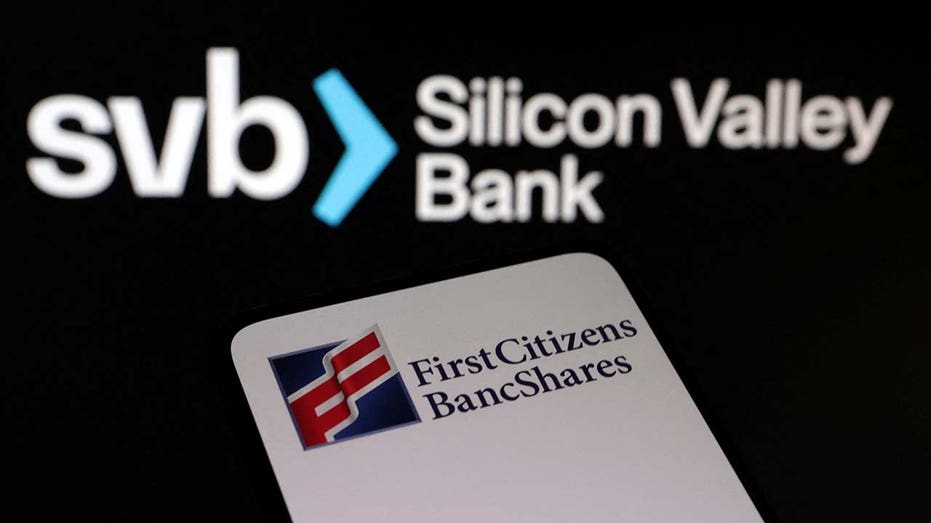Fed exploring ways to speed up bank oversight, strengthen stress tests
Barr's comments come after this spring's banking crisis led to the failures of three large regional banks
No other big banks are on the edge of failing: Anton Schutz
Mendon Capital Advisors President and CIO Anton Schutz discusses whether regional banks have stabilized on Mornings with Maria.
The Federal Reserve is exploring ways to move more swiftly when regulators identify issues at banks in the wake of a crisis that roiled the banking sector this spring.
Federal Reserve Vice Chair for Supervision Michael Barr said Tuesday in a panel discussion at the New York Fed that the central bank is looking for ways to be more nimble in its regulatory approach to the banking system before and during financial crises.
"We’re not an institution that moves quickly on supervisory issues," Barr said. "We tend to have a culture that makes it difficult for the institution to act quickly with respect to supervision" because the Fed tends to be a consensus-driven institution with policymakers looking to ensure they have sufficient evidence for decisions and consider due process issues facing firms, he explained.

The Federal Reserve is looking at revising how it approaches bank oversight with "reverse stress tests" according to Vice Chair for Supervision Michael Barr. (AP Photo/Patrick Semansky, File / Associated Press)
Barr said he would like to see the Fed act more quickly on potential regulatory issues when the industry isn’t in the midst of turmoil and noted, "We’re great in a crisis."
BANKING CRISIS CAUSED US BANK DEPOSITS TO FALL EVEN AS INSURED DEPOSITS ROSE: FDIC
He added that while the Fed can stress test banks to see how they would handle a variety of adverse scenarios, a broader "reverse stress test" could be useful to see scenarios that may cause a bank to fail.
FED WARNS TIGHTER CREDIT CONDITIONS COULD SLOW US GROWTH

First Republic Bank's collapse ranks as the second largest in U.S. history. It was acquired in May by JPMorgan Chase. (AP Photo/Jeff Chiu / AP Newsroom)
Barr explained, "Instead of thinking of a stressful scenario and then seeing how it would play through on, say, the balance sheet of a firm, you look at a bank and you say, well, what would it take to break this institution? What are the different ways this institution could die, or a piece of it, a significant piece of it?"
"We’re beginning to do that kind of thinking. I’d say we’re pretty nascent in it," Barr added.
Although neither Barr nor New York Fed President John Williams offered a comment on the economic outlook or monetary policy during the panel, Barr said that the banking system is strong and the issues that hit the global financial system this year appear to be limited to the firms that became distressed.
SVB CUSTOMERS WHO LOST DEPOSITS UNDER PRESSURE TO REPAY LOANS

Silicon Valley Bank's failure ranks was the third largest in U.S. history. It was acquired by First Citizens Bank in March. (REUTERS/Dado Ruvic/Illustration / Fox News)
The U.S. banking system experienced three of the four largest bank failures in its history this spring as a trio of large regional banks collapsed.
Their exposure to interest rate risk as the Fed hiked rates to tamp down inflation combined with large amounts of uninsured deposits in excess of the Federal Deposit Insurance Corporation’s $250,000 insurance threshold caused a bank run that resulted in their demise
GET FOX BUSINESS ON THE GO BY CLICKING HERE
First Republic Bank, which failed and was acquired by JPMorgan Chase in early May, ranks as the second-largest bank failure trailing only Washington Mutual in 2008.
Its collapse was preceded in March by the failures of Silicon Valley Bank (SVB), which was purchased by First Citizens Bank, and Signature Bank, a lender that was acquired by New York Community Bank. The failures of SVB and Signature Bank rank as the third- and fourth-largest bank failures, respectively.
Reuters contributed to this report.




















